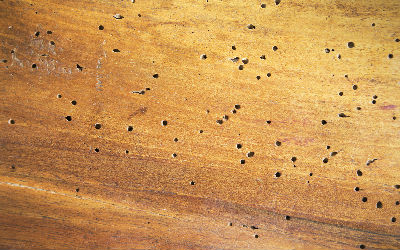
WOOD-BORING INSECTS
Wood-boring insects are a number of insects (mainly beetles) that are able to use wood as a food source. Some of them can cause serious damage to building timbers.
The beetles all have fairly similar life cycles, although there are variations in the length of each stage in the cycles, the type of wood attacked. And the extent and type of damage caused.
Correct identification is essential before any consideration can be given to whether treatment is required.
Wood-boring insects commonly found in building timbers fall into one of three categories according to the treatment normally required.
The following conditions favourable to the attack of timber by insects are Moisture content, presence of bark, the nutritional value of wood, starch, and fungal decay.
The most common insect is the common furniture beetle (Anobium Punctatum) or woodworm. Found in softwoods and European hardwoods.
SOLID TIMBER – Sapwood only affected, unless wood rot present, when it may be found in heartwood also. Frequent in older furniture and all constructional timbers, particularly around loft access, timbers in contact with solid walls, under stairs, cupboards and other areas affected by damp.
EMERGENCE HOLES – Circular 1-2mm in diameter
TUNNELS – Circular 1-2mm in diameter is often extensive, random orientation but mainly in the direction of the grain. Often exposed on the surface of floorboards by general wear.
BORE DUST – Cream coloured lemon-shaped pellets, gritty
INSECT CHARACTERISTICS AND LOCATION – Adult 3mm-5mm long dull brown lines of pits on wing covers 180 degrees angle between edge of hooded thorax and edge of wing covers. Found on or around damaged timber late March-early August particularly in warm weather, attracted to windows and white surfaces.
Larva up to 6mm long curved pale cream, three pairs of legs, narrow dark band over mouth parts, found all year round in infested wood, often few in number, absent in extinct infestation.
If you require our assistance please contact us today via our website CLICK HERE.
